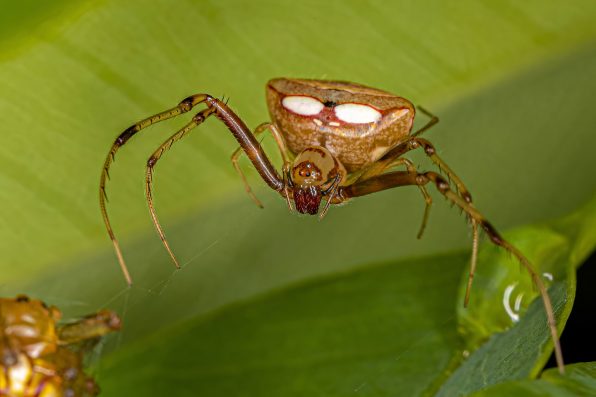Two new species of pirate spiders have been discovered on a remote tropical island in the South Atlantic Ocean. As amusing as it would be, these spiders are not donning tiny little eye patches or colorful bandanas tied around their heads.
Instead, they are named after their habit of violently taking over other spiders’ webs and murdering the occupants.
For decades, the pirate spiders have remained hidden on the island of St. Helena. Previously, they were confused for another species that is closely related to them. Now that they have been correctly identified, it is hoped that the pirate spiders will add some urgency to the need to preserve the threatened forest habitat of the island.
“Our work showed that two species new to science existed in the cloud forest, but for over four decades, they were thought to be a single, common species which can be found in many parts of the world, including the U.K.,” said Danni Sherwood, the lead author of the study of these spiders.
Sherwood added that the spiders live in “one of the most unique and threatened habitats in the world: the St. Helenian cloud forest.” They do not live anywhere else. St. Helena is located about 1,242 miles off the coast of Africa. It is one of the most isolated places on the planet. It contains environments that range from tropical forests to arid deserts.
Around the island’s peaks, the cloud forest can be found. The trees catch water from the clouds, and the water is then drained to the lower parts of the island. This process is crucial as it makes up 60 percent of the water that St. Helena receives each year.
Sadly, not much of the forest is still around. Historically, it has been cleared for crops and cattle. Additionally, the introduction of invasive species has furthered the decline of the forest. Today, only small patches of forest are remaining.
The U.K. government, assisted by other organizations, is striving to help the forest recover through the St. Helena Cloud Forest Project. In order to do that, the species that live in the forest must be identified and accounted for.
Researchers believed that a species called Ero aphana, a pirate spider that is usually found in western Europe, also lived in the forest. However, when they reexamined museum specimens of the spiders, they noticed that something seemed off.

Sign up for Chip Chick’s newsletter and get stories like this delivered to your inbox.


